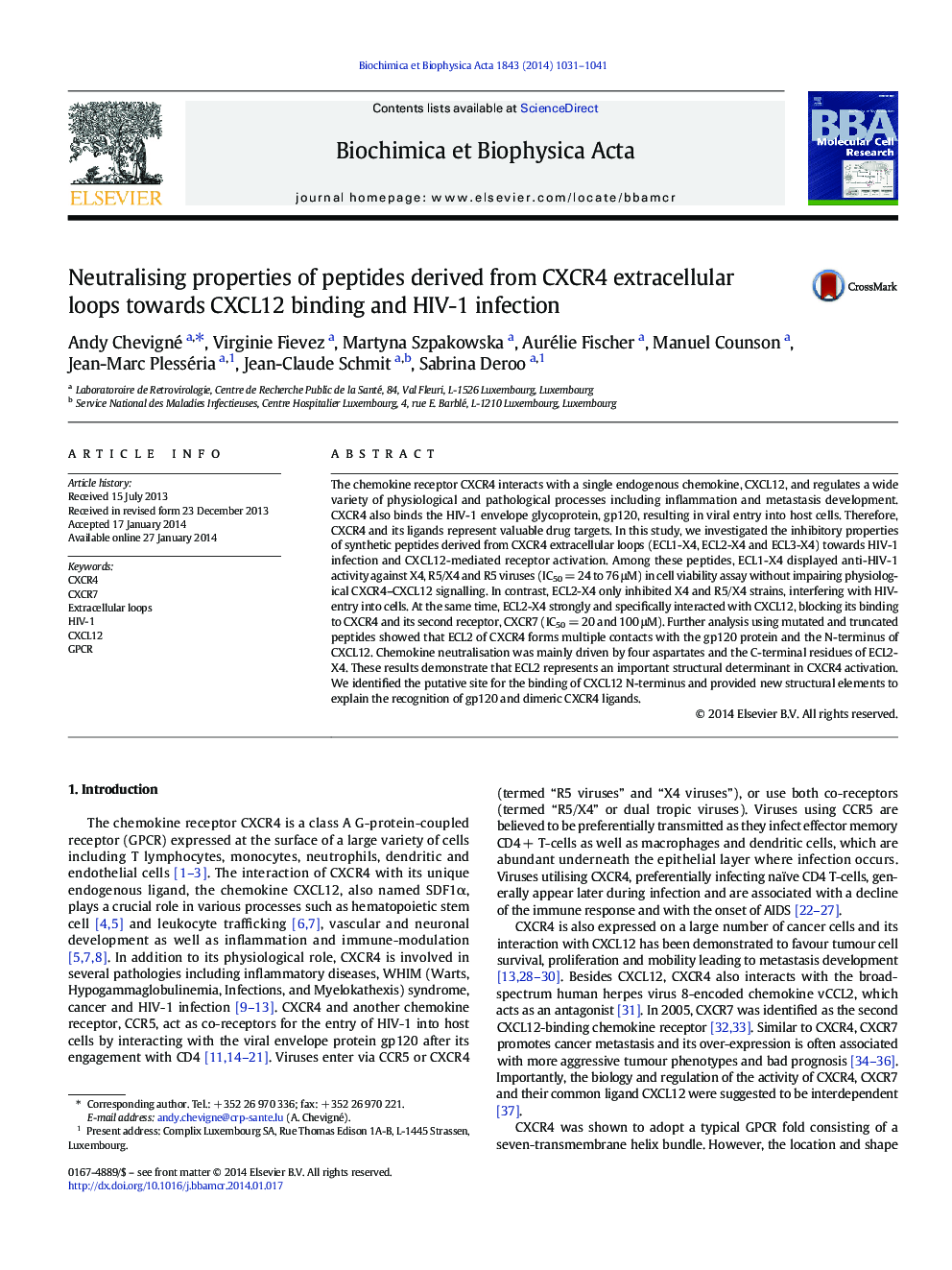| Article ID | Journal | Published Year | Pages | File Type |
|---|---|---|---|---|
| 1950612 | Biochimica et Biophysica Acta (BBA) - Molecular Cell Research | 2014 | 11 Pages |
Abstract
The chemokine receptor CXCR4 interacts with a single endogenous chemokine, CXCL12, and regulates a wide variety of physiological and pathological processes including inflammation and metastasis development. CXCR4 also binds the HIV-1 envelope glycoprotein, gp120, resulting in viral entry into host cells. Therefore, CXCR4 and its ligands represent valuable drug targets. In this study, we investigated the inhibitory properties of synthetic peptides derived from CXCR4 extracellular loops (ECL1-X4, ECL2-X4 and ECL3-X4) towards HIV-1 infection and CXCL12-mediated receptor activation. Among these peptides, ECL1-X4 displayed anti-HIV-1 activity against X4, R5/X4 and R5 viruses (IC50 = 24 to 76 μM) in cell viability assay without impairing physiological CXCR4-CXCL12 signalling. In contrast, ECL2-X4 only inhibited X4 and R5/X4 strains, interfering with HIV-entry into cells. At the same time, ECL2-X4 strongly and specifically interacted with CXCL12, blocking its binding to CXCR4 and its second receptor, CXCR7 (IC50 = 20 and 100 μM). Further analysis using mutated and truncated peptides showed that ECL2 of CXCR4 forms multiple contacts with the gp120 protein and the N-terminus of CXCL12. Chemokine neutralisation was mainly driven by four aspartates and the C-terminal residues of ECL2-X4. These results demonstrate that ECL2 represents an important structural determinant in CXCR4 activation. We identified the putative site for the binding of CXCL12 N-terminus and provided new structural elements to explain the recognition of gp120 and dimeric CXCR4 ligands.
Related Topics
Life Sciences
Biochemistry, Genetics and Molecular Biology
Biochemistry
Authors
Andy Chevigné, Virginie Fievez, Martyna Szpakowska, Aurélie Fischer, Manuel Counson, Jean-Marc Plesséria, Jean-Claude Schmit, Sabrina Deroo,
